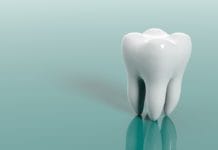Running behind schedule is a major stressor for many dental hygienists. Dentistry is often a fast-paced, demanding line of work. Despite the best time management techniques, sometimes an appointment runs late, and we are caught trying to play catch-up.
If we cannot catch up right away, one late appointment might domino into the next, and patient flow could be affected for hours. Here are six suggestions to try the next time you’re running behind.
1) Ask for help
It may seem simple, but sometimes, it can be hard to ask for help when you need it. Sometimes, there is a stereotype that dental hygienists are the “divas” of the office, so sometimes needing assistance can feel like we’re being high maintenance.
I used to wait until the last possible moment to ask for help when I was running late. I wanted to catch up on my own and was overly optimistic that I could do so. However, it’s best to give your teammates some notice and communicate with them as soon as possible.
If you have an extra operatory, it can be a lifesaver. Maybe someone can seat your next patient. If not, maybe the front can schedule your next patient’s hygiene visit while they’re waiting for you to take them back.
Perhaps if you’re running late with a chatty patient and need an exam, you could pull the dentist aside briefly and ask for their help keeping the patient focused during the exam.
Each team member is an asset and can offer valuable assistance. Be sure to thank those who have helped you and look for ways to assist them once you’re all caught up.
2) Let the next patient know
It can be irksome for patients to be waiting in the reception area. They might start to feel as though they have been forgotten or that they aren’t a priority. This is why it is crucial to keep the waiting patient informed.
Have someone tell your next patient that you are running late, and give them a time estimate if possible. When you call them back, thank them for their patience. A brief explanation is optional. For example, “Thank you for waiting. We are short a person, so it’s been a little more hectic than usual.”
It is important for patients to feel acknowledged and appreciated, so proper communication is key.
3) Make sure your patient’s needs are still met
As previously mentioned, a patient who was kept waiting might feel like they aren’t a priority. The feeling could be exacerbated if we rush through their appointment. While efficiency is important, ensure every patient gets quality care and has their concerns addressed.
Also, if a patient had to wait for a delayed appointment start time, maybe the team can make a point to minimize the patient’s wait for their exam and checkout.
4) Think ahead to your next appointment
Since dentists often do their exams at the end of the hygiene appointment, you might be running late but stuck waiting on the dentist for an exam. This is an excellent opportunity to get as prepared as possible for your fast-approaching next appointment.
If you have another operatory, you could be completely set up and ready to go. If not, you can have your next tray completely set up. Do you need any radiograph sensor holders, implant instruments, or floss that will thread under a bridge? Does your next patient usually like a bite block?
Try to anticipate everything the next patient will need and be ready. If there’s another computer available, you could refresh your mind about the next patient’s chart notes, radiographs, and medical history. Anything you can do to prepare for the next patient will help you get caught up.
5) Go to the bathroom anyway
Neglecting your own needs to see your patients faster is a bad idea. It’s unhealthy to put off using the bathroom, getting a sip of water, or even grabbing a bite to eat if your blood sugar is becoming low. Denying yourself these things will make you feel more drained and can lead to burnout.
Remember the popular airplane metaphor and put on your own oxygen mask before helping others. You aren’t going to be as attentive to your patient if you feel like your bladder is going to burst. Give yourself a moment to take care of your own needs, and don’t let coworkers or patients make you feel bad about it. One more minute of waiting isn’t going to make a significant difference.
6) Analyze what caused the backup in appointment flow
Once the office is no longer running behind, try to evaluate what made appointments begin to run late. Did a patient show up late? Was the patient overdue, chatty, or just had a lot of calculus or stain? Are there time management skills that can be refined?
Ask yourself if there are ways to prevent a similar situation in the future. For example, you might be able to schedule a chronically late patient as the last appointment of the day. You can request that overdue patients be scheduled for a longer appointment time. If there is often an extended wait for an exam at the end of each appointment, maybe try to get the exam done right at the beginning of the appointment. If your instruments are slowing you down, maybe set aside some time for sharpening or ordering replacements. Brainstorm with your team about how to operate at peak efficiency.
In Closing
Everyone has run behind schedule at one point or another. It is a rare occurrence at some offices, but at others, it is more common. Dental hygienists already have a lot to complete at each appointment, and running late can add extra stress and frustration.
It is important to stay calm and focus on what we can do to improve the situation. Delegation, communication, strategic time management, and self-evaluation can lead to a smoother, more punctual day.
Before you leave, check out the Today’s RDH self-study CE courses. All courses are peer-reviewed and non-sponsored to focus solely on high-quality education. Click here now.











